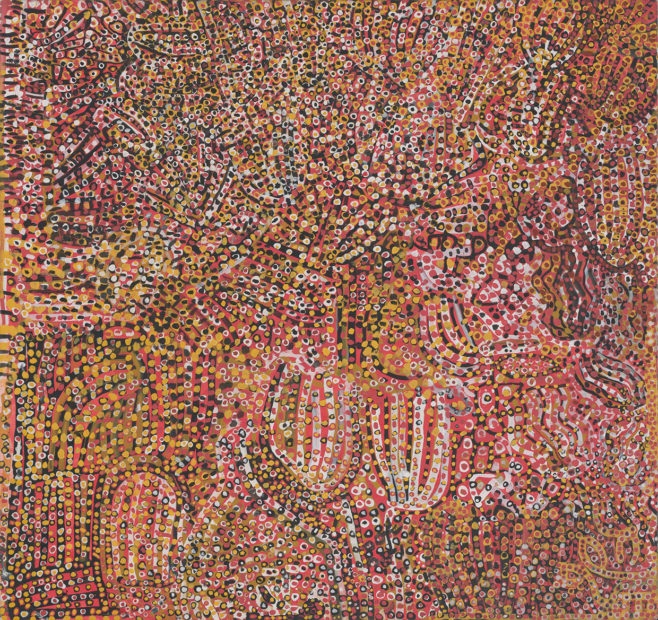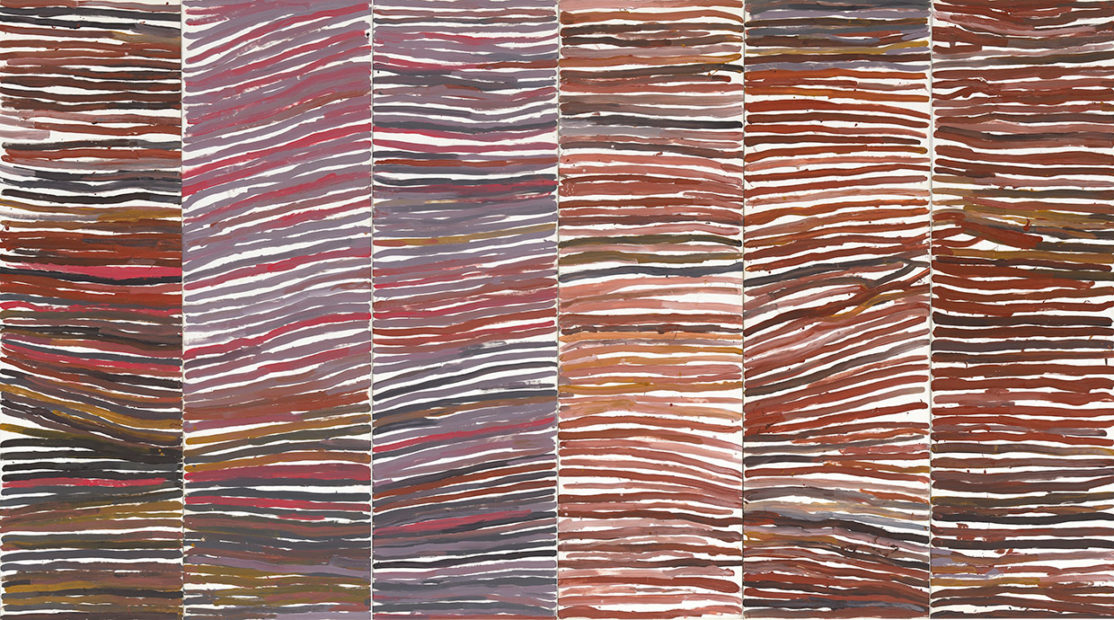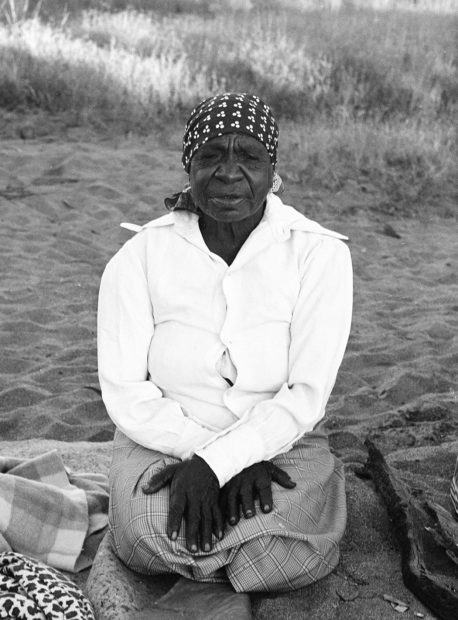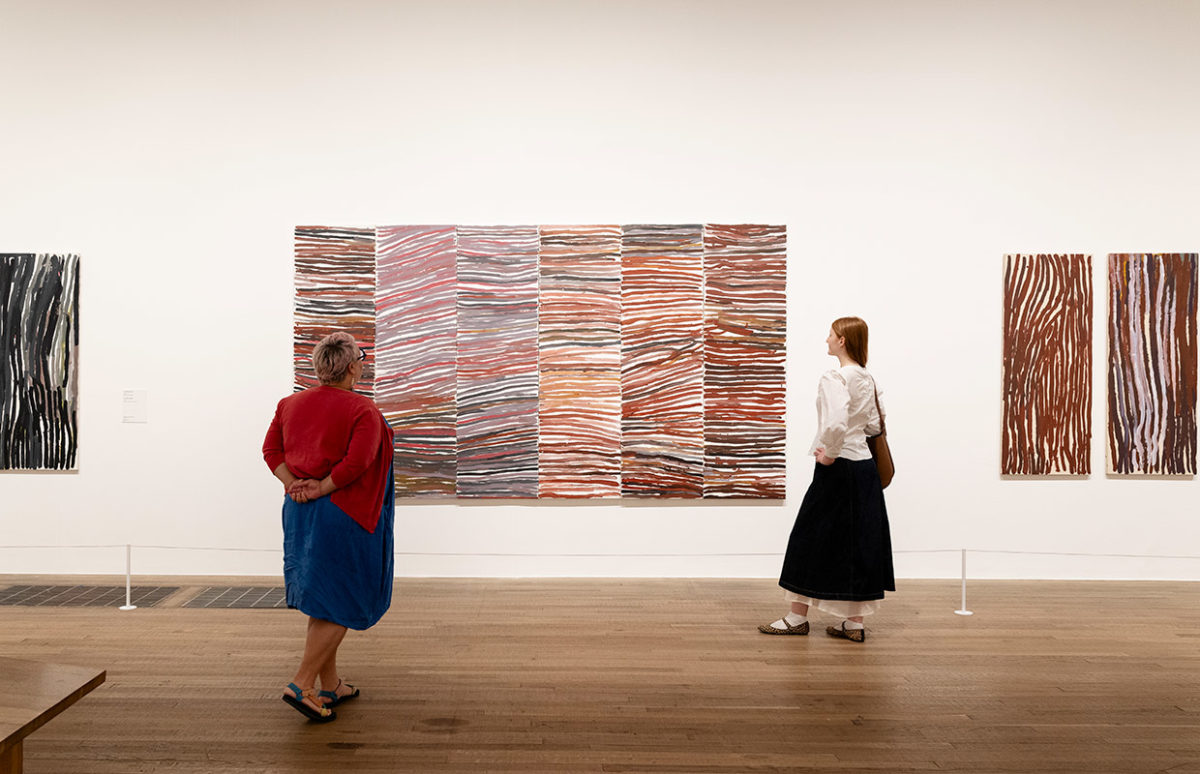The rooms of the Tate Modern are filled with the monumental art of Emily Kam Kngwarry, who depicted the life and beliefs of her Indigenous community in Australia's Northern Territory. Kngwarry came late to art and spent the last eight years of her long life producing giant paintings which are now considered the forefront of Australian art.
Emily Kam Kngwarry was born around 1910 in the Sandover region of the Northern Territory, north-east of Alice Springs. She was an Anmatyerre woman and very involved in the beliefs and ceremonies of her people, particularly "awely", women's ceremonial traditions including song, dance and body painting.
Kngwarry had always participated in creating art, but it was mainly ephemeral, painted on bodies or traced in the earth. In the 1970s, she learned the technique of making batik textiles in an adult-education programme. In her seventies, she switched to making large-format acrylic paintings and spent her final years, from 1988 up to her death in 1996, producing an estimated 3000 paintings.
Kngwarry is well-known in Australia, and and was one of three Indigenous women artists who represented the country in the Venice Biennale in 1997. But the Tate Modern is showing the first solo exhibition of her work in Europe, featuring 80 batiks and paintings.
In her short painting career, Kngwarry experimented with different styles.

Ntang Dreaming (1989) seems similar to the "dot painting" style used by many Aboriginal artists. In this case, it depicts the edible seeds of the woollybutt grass, an important foodstuff in Kngwarray’s Country.

By 1994, in the six-panel work created for the Venice Biennale, Untitled (Awely), her painting style portrays more movement, with motifs of lines that evoke the women's awely ceremonies.

And the following year, the painting Yam Awely, which closes the exhibition, has much more fluid lines and twists, depicting the grasses, yams, roots and tracks that criss-cross the desert and had deep spiritual meaning for Kngwarray in her connection to the land.
The Tate has a short video where you can hear Kngwarray speaking her native language, and see her at work.

Emily Kam Kngwarray
Tate Modern, London
Till 11 January 2026
Copyright(s) :
Emily Kam Kngwarray installation view at Tate Modern 2025. © Emily Kam Kngwarray/Copyright Agency. Licensed by DACS 2025. Photo © Tate (Kathleen Arundell)
Emily Kam Kngwarray, Ntang Dreaming 1989 National Gallery of Australia, Canberra. © Emily Kam Kngwarray/Copyright Agency. Licensed by DACS 2025
Emily Kam Kngwarray, Untitled (awely) 1994. National Gallery of Australia, Canberra © Emily Kam Kngwarray/Copyright Agency. Licensed by DACS 2025
Emily Kam Kngwarray, Yam awely 1995. National Gallery of Australia, Canberra. © Emily Kam Kngwarray/Copyright Agency. Licensed by DACS 2025
Emily Kam Kngwarray near Mparntwe _ Alice Springs in 1980. © Toly Sawenko
> Change in Australia’s National Anthem to Reflect Indigenous Heritage
> Uluru to Close to Public
> Indigenous Rap: Young Australian of the Year
Tag(s) : "art" "Australia" "Australian Aboriginal people" "Dreamtime" "Give Me Five 4e" "Shine bright 1e" "Shine bright 4e" "Shine Bright AMC" "Speakeasy Files 3e"





